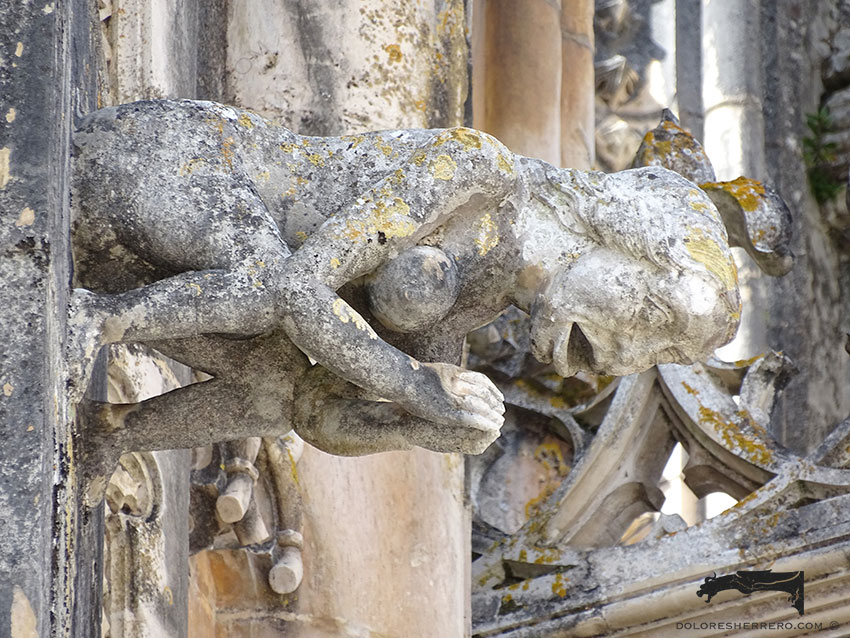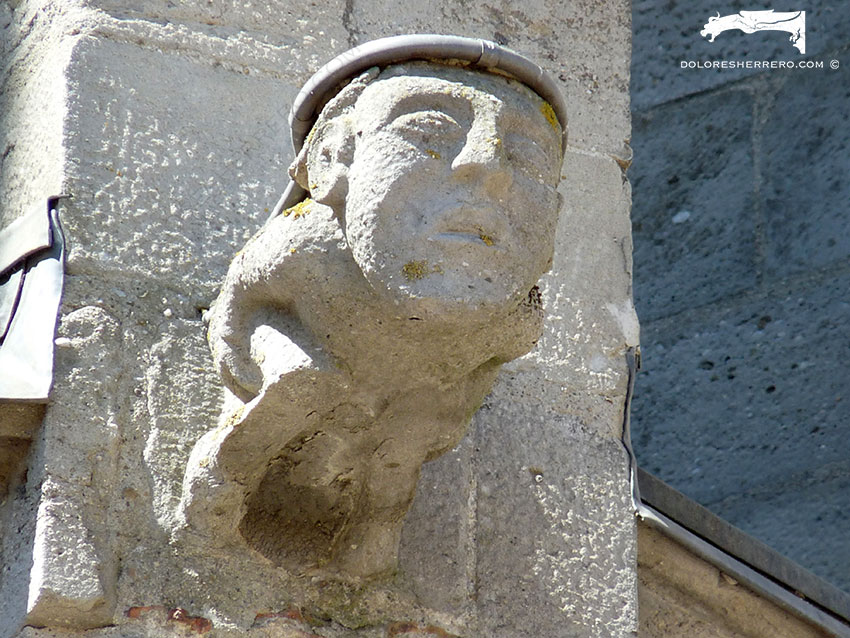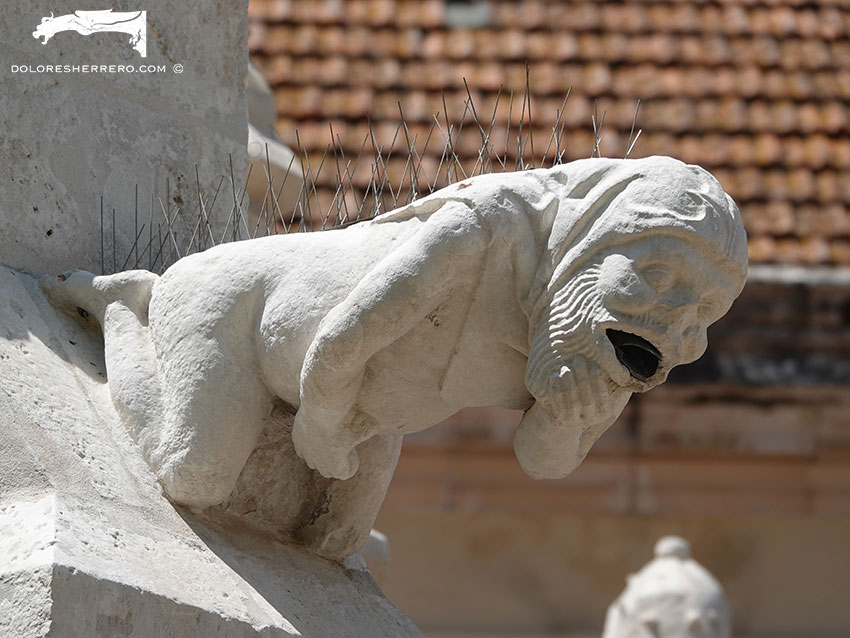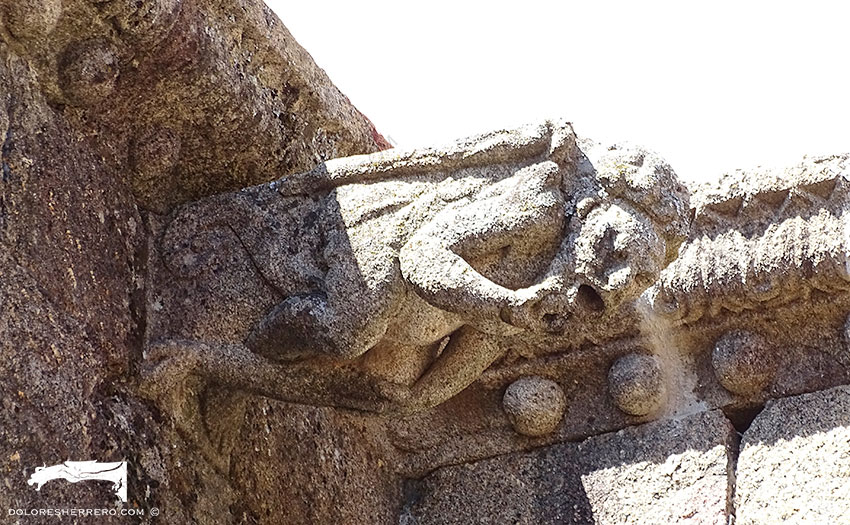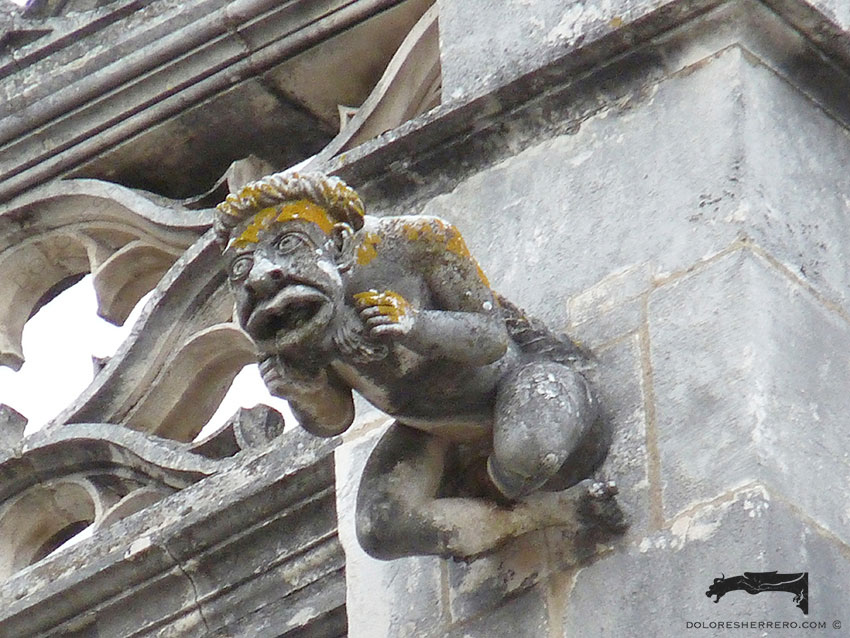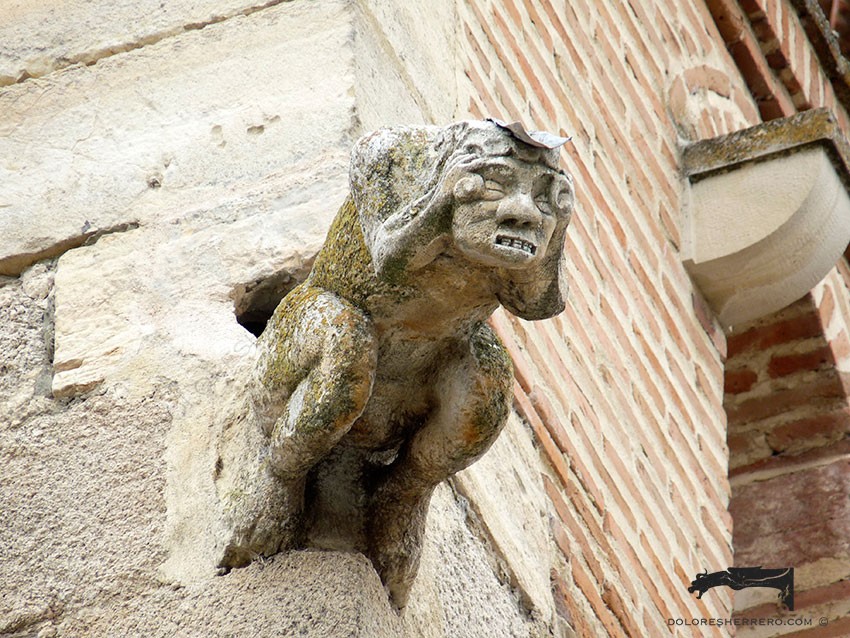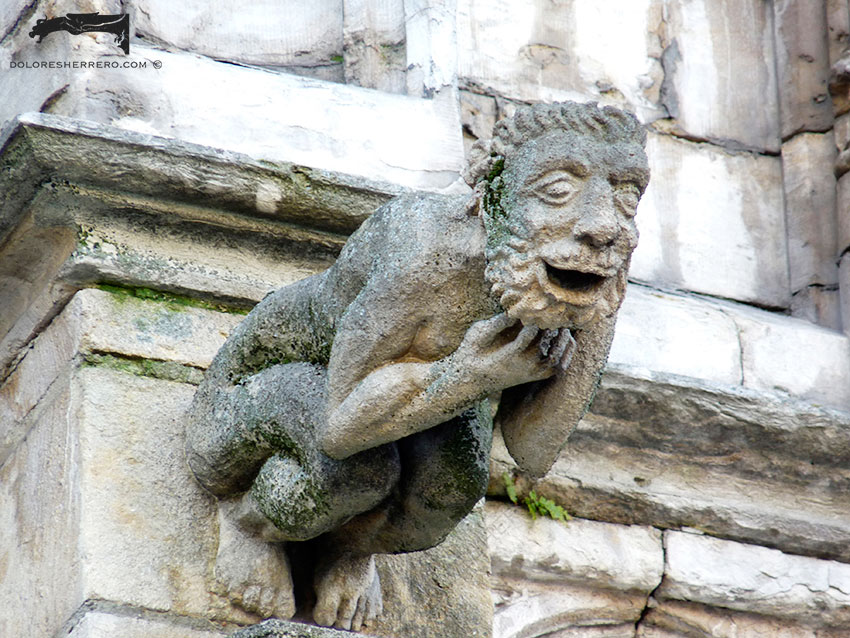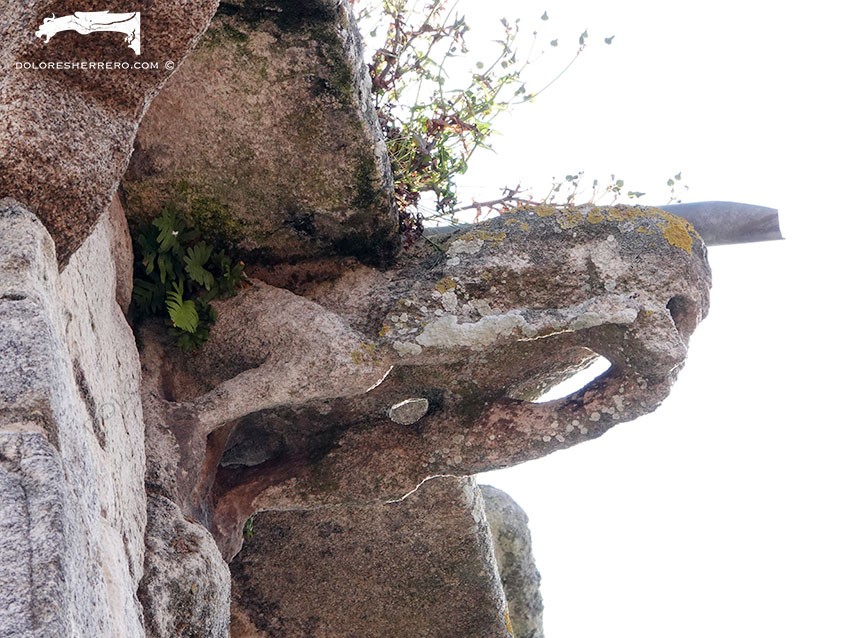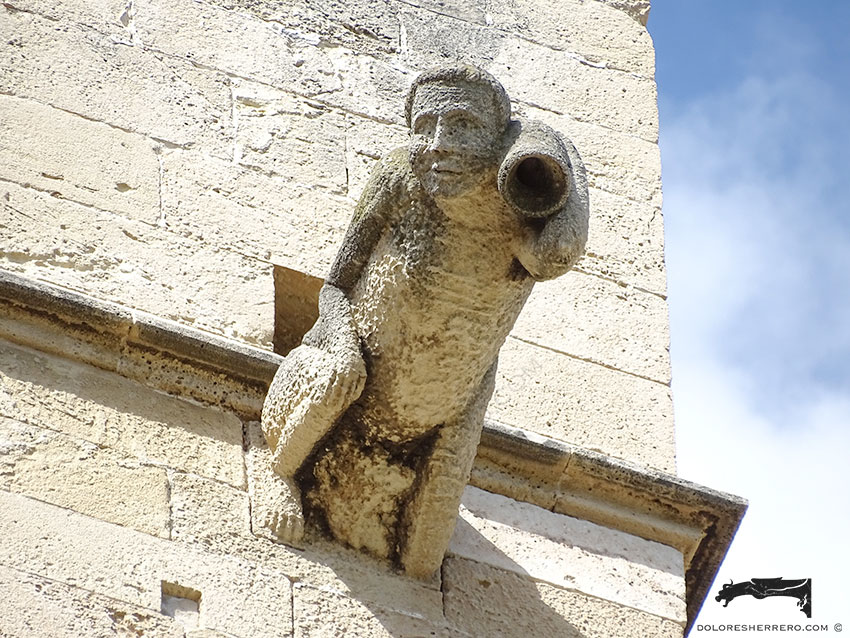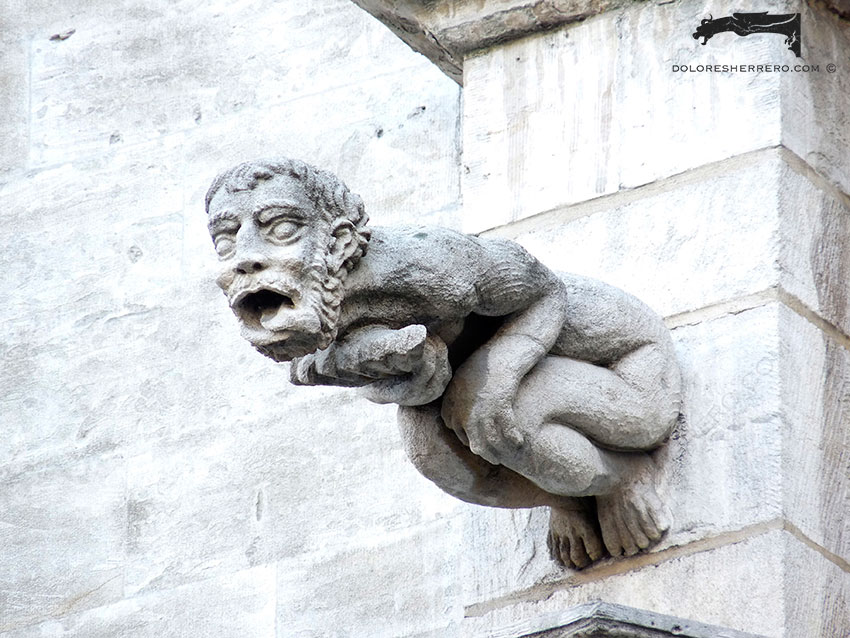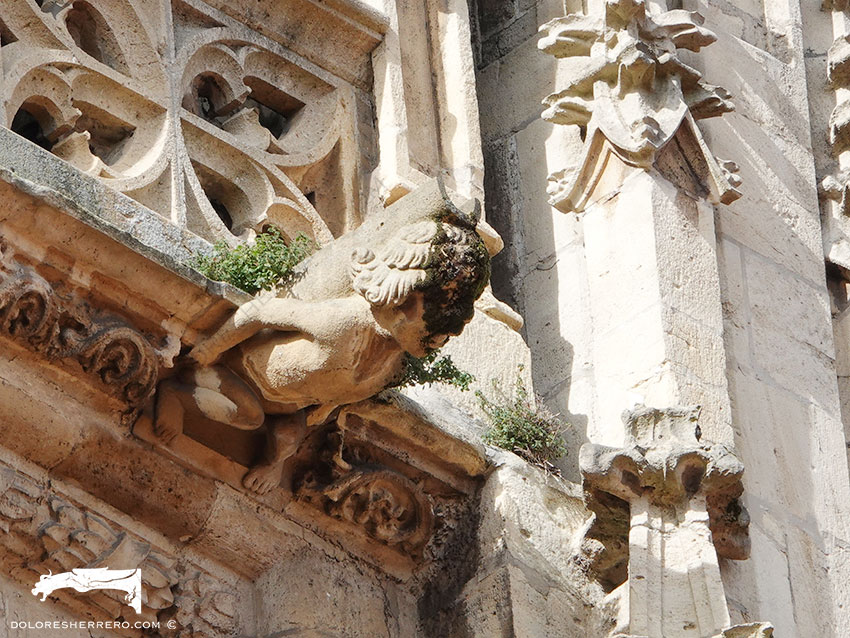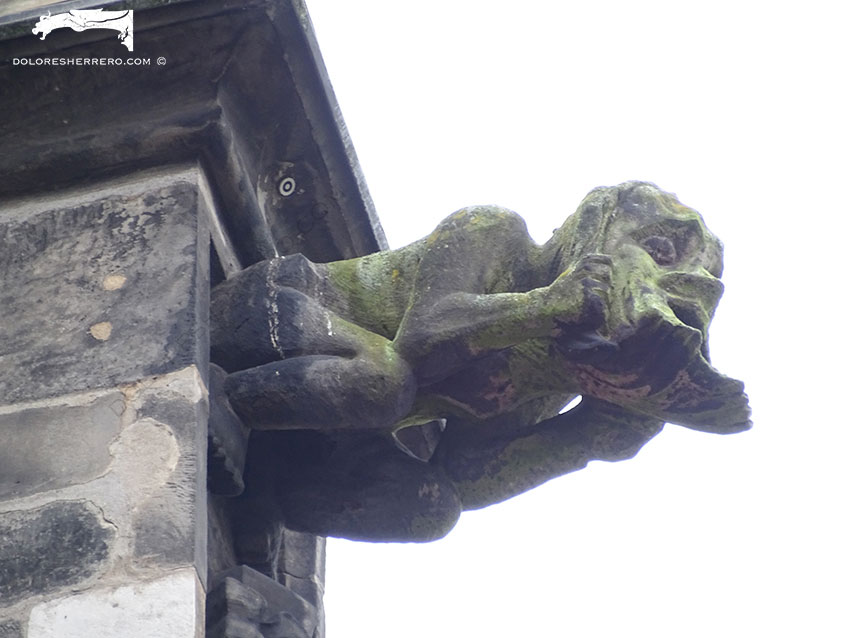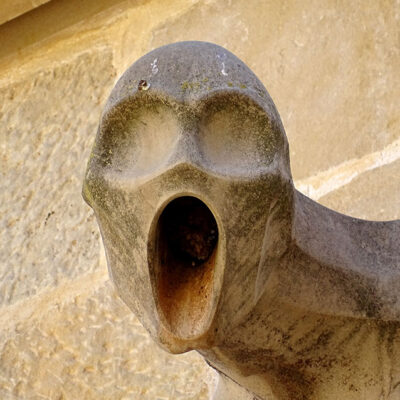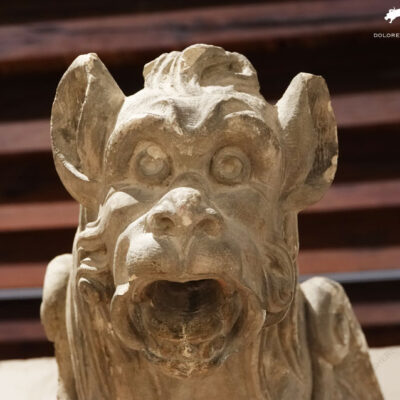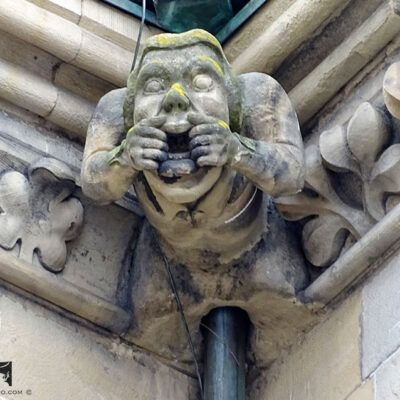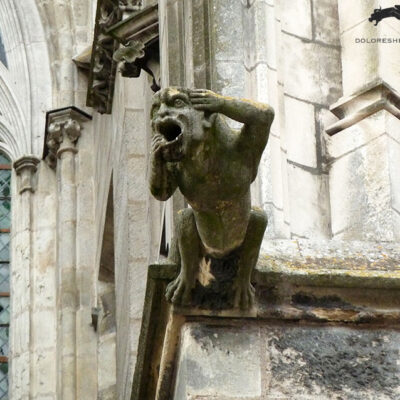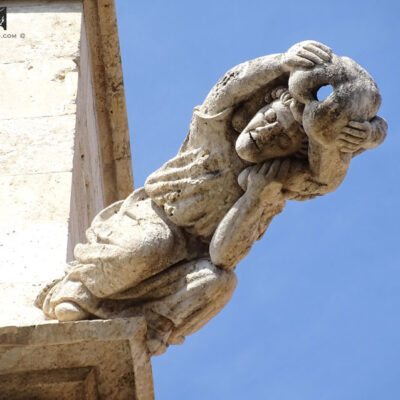Today’s post is about the portrayal of nakedness in gargoyles.
In his book on the history of the body in the Middle Ages, the great French Medievalist Jacques Le Goff (1924-2014) tells us that the Roman Empire already exercised containment in terms of the body and sexuality, in what has been called paganism. When Christianity became the state religion, the body was repressed. The Middle Ages was an era characterised by the renunciation of the body, with the clergy suppressing bodily practices and Church Elders implementing ascetic monasticism combined with the mortification of the body (hair shirt, sleeping on the ground, flagellation, control over movement) together with imposed voluntary suffering such as fasting and abstinence. It’s worth remembering that in the Middle Ages, Adam and Eve’s sin became a sin of the body, a sexual sin. As a result, the body was the great loser in the original sin.
However, Le Goff says that on the whole, people were not against nakedness and that only the Church rejected it. But, in spite of this, St Francis of Assisi stripped naked twice, once in front of his father, his bishop and his community to show his conversion and renouncement, and a second time in the church to preach. As the saint said, “follow the naked Christ naked”. In fact, by the 13th century most theologians began seeing the body in a more positive light (St. Buenaventura, St. Thomas).
The consequence of renouncing the body was that nakedness became regarded as being humiliating and degrading, a sign of having been expelled from the community and the domain of devils, pagans and heretics, “a stain from the pagan gods that must be wiped from Christian consciousness”, as Luther Link says. This author states that nakedness in the human figure and in the devil comes from classic Antiquity. The ecclesiastical hierarchy saw pagan gods as devils, who almost always showed themselves naked, which was why they had to be portrayed in this way. According to Claudio Lange, figures that show their sex are not Christian sinners, although they may be marginal Christians.
In this research, Le Goff says that eroticism emerges in the margins of manuscripts, in drôleries, where we see the body shown in forms never depicted anywhere else. The margins, he says, are spaces for pleasure, entertainment, ornament and, especially, uncensored spaces where scandalous or lewd topics can flourish. Le Goff tells us that “the body is unleashed in the margins”.
Nakedness appears in all manifestations of marginal art: gargoyles, drôleries, corbels, etc.
Thus, the body is unleashed in gargoyles.
Gargoyles
- Batalha Monastery (Portugal)
- Church of St. Vincent in Carcassonne (France)
- Church of Nossa Senhora do Pópulo, Coto e São Gregório in Caldas da Rainha (Portugal)
- Parish Church of San Pedro in Gata (Cáceres, Spain)
- Batalha Monastery (Portugal)
- Church of Nuestra Señora de la Soterraña in Santa María la Real de Nieva (Segovia, Spain)
- Brussels City Hall (Belgium)
- Cathedral of María Inmaculada in Vitoria (Spain)
- Brussels City Hall (Belgium)
- Collegiate Church of Santa María del Campo in Coruña (Spain)
- Palma de Mallorca Cathedral (Spain)
- Brussels City Hall (Belgium)
- Oviedo Cathedral (Spain)
- Aachen Cathedral (Germany)
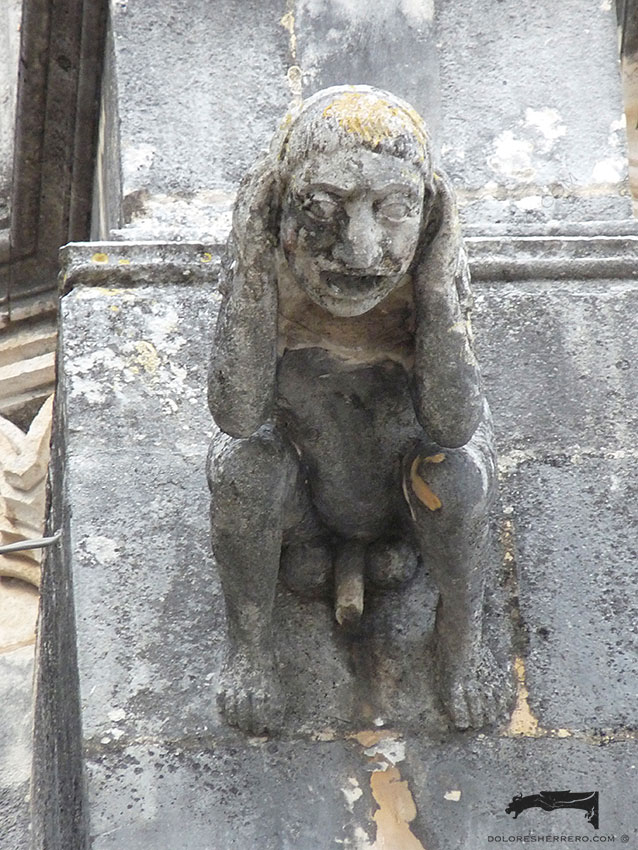
Batalha Monastery (Portugal)
Bibliography consulted
LANGE, C., “La clave anti-islámica. Ideas sobre marginación icónica y semántica”, Relegados al margen. Marginalidad y espacios marginales en la cultura medieval (2009), pp. 115-127.
LE GOFF, J. y TRUONG, N., Una historia del cuerpo en la Edad Media, Barcelona, Ediciones Paidós Ibérica, S. A., 2005.
LINK, L., El Diablo. Una máscara sin rostro, Madrid, Editorial Síntesis, S. A., 2002.

Doctor of Art History and researcher specializing in the study of gargoyles.
I am Dolores Herrero Ferrio, and my thesis, “An Approach to the Study of Gargoyles of Gothic Cathedrals in Castilla and León”, is dedicated to the study of these fascinating figures.
If you like gargoyles and art history, you will also enjoy my book, “The Gargoyle and Its Iconography,” a book I have written with great care for those interested in the world of gargoyles.
I have created my own Encyclopedia of Gargoyles, a Gargopedia to share with you, where you will discover all the secrets and wonders of these enigmatic sculptures.
I hope you enjoy this Gargopedia as much as I have enjoyed creating it, and remember that each gargoyle has a story to tell, and here you will discover them all.
